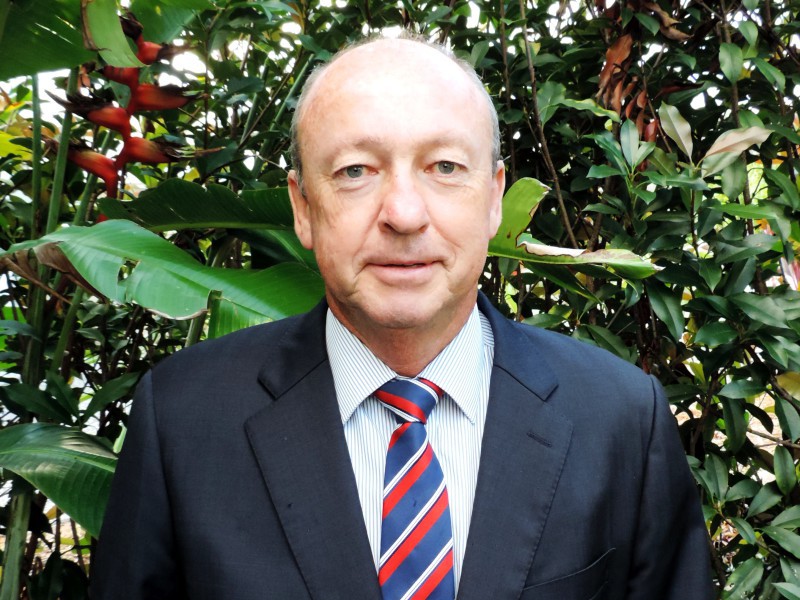A lack of cohesion between federal and state environmental regulations is threatening businesses. Rick Ralph, National Waste and Recycling Industry Council (NWRIC) Chief Executive Officer says it’s time for an overhaul.
Over the past two years as we all lived the COVID -19 experience, we have seen the challenges of how a federation of governments should work, witnessing how states have interpreted rules and then changed them. COVID-19 was not unique in terms of these federation arrangements, but for the first time it became clear to all how mature conversations and genuine collaboration between governments agreed one thing, then states did something different.
Regrettably the same situation presents itself in terms of our industry’s environmental regulatory environment. In terms of waste and recycling policy formation and its waste diversion targets, the talk across government and community is constant. The conversation in terms of state and federal targets being set, and policies articulating the benefits of having a ‘circular economy’ genuinely admirable.
However, not a word in any of these conversations is any form of acknowledgement about how fragmented the industry’s regulatory system is. The disconnect between federal and state regulation is wider today than it ever has been in my 42-year career in terms of how the system is being managed, regulations implemented, or how this environment is policed.
The lack of co-ordination between federal and state regulators, the setting of individual state rules without any evidence of science behind these, and the fact federal regulations are introduced but then fall over in their delivery is now fundamentally threatening legitimate business owners’ current investments and its confidence.
With the 2022 election out of the way, the new Federal Government is setting its legislative agenda, advocating reforms to many portfolios and department agendas. With respect to our business environment, it is welcome news that Tanya Plibersek, Minister for the Environment and Water, has committed to formally responding to Graeme Samuel’s 2021 review of the Environment Protection and Biodiversity Conservation (EPBC) Act.
Samuel’s review found that ‘the EPBC Act is ineffective. It does not enable the Commonwealth to effectively protect environmental matters that are important for the nation. It is not fit to address current or future environmental challenges.’ It reports ‘The EPBC Act has no comprehensive mechanism to describe the environmental outcomes it is seeking to achieve or to ensure decisions are made in a way that contributes to them. Legally enforceable National Environmental Standards should be made as the centrepiece of effective planning, regulation, and investment. This will ensure that all decisions clearly track towards improved environmental and heritage outcomes.
National Environmental Standards should be a set of binding and enforceable regulations. They should be one set of rules that apply nationwide. The Commonwealth should make the Standards, and a formal process for doing so should be set out in the EPBC Act.’
The review of the EPBC Act would set a new order in terms of us having legally enforceable national environmental standards and guidelines, and how these would then translate to interaction with state environmental laws.
In terms of the waste management and resource recovery industry, one doesn’t have to dig very deep to see clear evidence of the systemic regulatory disconnect NWRIC members are challenged with daily.
As example, The Department of Climate Change, Energy, Environment and Waste has responsibility for the PFAS National Environmental Management Plan (NEMP). It provides nationally agreed guidance on the management of PFAS contamination in the environment, including prevention of the spread of contamination.
Yet despite us having an agreed federal guideline to manage PFAS, state regulators and our elected state members are overriding these by setting their own rules.
Evidence shows that in one state we have the regulatory scenario where you can purchase fresh fish fillets from a fishmonger and have a lovely meal, but the fish frame from which the fillets came, cannot be accepted for compost as it contains PFAS levels 16 times higher than state compost standards allow.
One must question why those same regulators are classifying PFAS contamination in parts per billion for composts when the current threshold levels of Arsenic in the Australian Standard for Compost (AS4454) is set at 20 parts per million.
Other examples present where surface water held on some industry assets cannot be discharged to local waterways as it contains levels of PFAS that are below drinking water standards, but the regulator refuses to consider science.
This creates genuine conflict to a business operating environment. In another state, our industry is faced with the prospect of a private members bill being introduced that bans licensed landfill facilities from receiving and disposing of PFAS contaminated substances within 50 kilometres of land used for the business of primary production: or within a township or five kilometres from the boundaries of a township. That decision, if legislated, will mean the only disposal option for wastes of this type is in the centre of Australia. The cost to business, the community, and existing investments immeasurable.
With respect to the recently introduced federal export waste bans, business owners already see evidence in the failure by federal regulators to enforce their own rules. Evidence exists where rorting of the reporting system is occurring and waste is being exported against the guidelines under different classifications, yet regulators with evidence presented still fail to act against those responsible.
The announcement by the Albanese Government to commit to establishing a federal Environment Protection Agency during its current term is welcomed, but simply replacing a broken regulatory model with a new agency won’t change a thing unless wholesale change occurs.
NWRIC watches with interest to see if the newly elected federal government’s walk actually matches its talk.



